Ronald.phillips
Shared posts
Researchers Link SideWinder Group to Dozens of Targeted Attacks in Multiple Countries
Researchers Hijack Popular NPM Package with Millions of Downloads
US Issues Declaration on Responsible Use of AI in the Military
Read more of this story at Slashdot.
Winnie-The-Pooh: Blood And Honey Review: Don't Bother With This Humorless Bloodbath
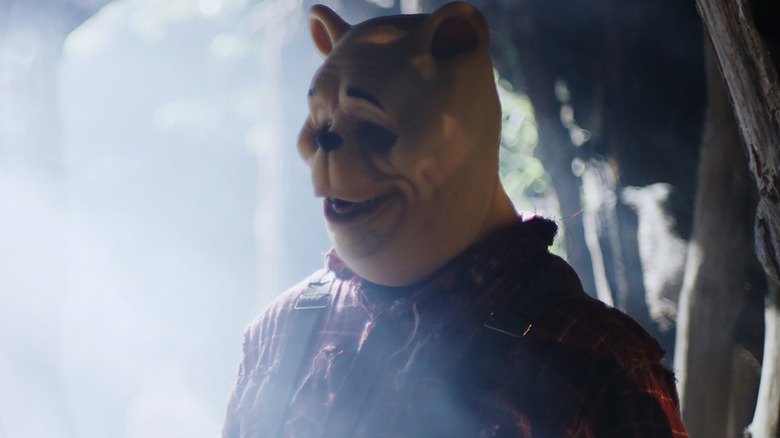
On January 1, 2022, A.A. Milne's gentle 1926 children's novel "Winnie-the-Pooh" finally entered the public domain. Previously, Disney owned the rights to the character, having owned them since 1966, and for many, Disney's rendition of the little stuffed teddy bear had become the character's pop culture standard. Few characters in children's literature are as gentle and as guileless as Winnie-the-Pooh, and Disney's version merely amped up the saccharine sweetness. Milne's conceit is that Pooh and his stuffed animal compatriots may be imagined by their owner, a 6-year-old British boy named Christopher Robin, and their conversations are whimsically circular and not terribly deep.
Naturally, when Pooh became the property of the people, the first thing filmmaker Rhys Frake-Waterfield wanted to do was to make an ultra-violent horror movie, with everyone favorite silly ol' bear as a bloodthirsty, murderous hillbilly. The resulting film is just as stupid as one might expect.
The most notable feature of "Winnie-the-Pooh: Blood and Honey" is its complete lack of humor. With Pooh and Piglet as murderous monsters, one might assume the filmmakers would draw from Milne's iconography, dialogue, or from E.H. Shepard's famous illustrations to derive horror and murder scenarios. Disappointingly, Pooh and Piglet — envisioned as mute, 7-foot humanoid behemoths with cartoonish animal heads — are no different in practice than the murder family from "The Texas Chain Saw Massacre" or the mutant forest-dwellers from "Wrong Turn." Naturally, one might expect a winking, ironic, "Funny Or Die" tone to serve as the spine of a Poohbear horror film, playing up the absurdity of its central conceit. "Blood and Honey" opts to play the horror completely straight. This wouldn't be so horrible a miscalculation had the horror also been, well, any good.
Pooh As A Mutant Outcast
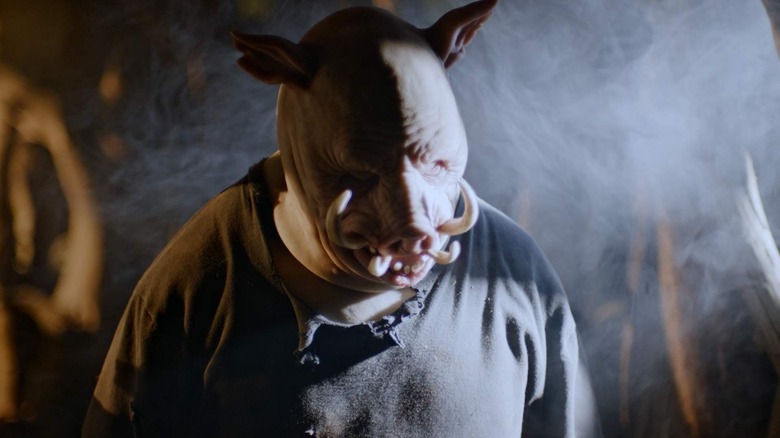
"Blood and Honey" borrows a notable conceit from Disney's own 2018 film "Christopher Robin." In that film, the titular boy left his stuffed toys behind in the 100-Acre Wood to join the army, grow up into Ewan McGregor, and start a family of his own. Years later, Christopher would return home to find that his stuffed animals remained alive and alone in the woods during his absence, but remained just as eager to play. The prologue of "Blood and Honey," explains that Christopher Robin (Nikolai Leon) befriended actual animals in the 100-Acre Wood, describing Pooh and his friends as bizarre mutant animal hybrids, creatures that might have been seen on the Island of Dr. Moreau. They began to rely on Christopher for food. When he left to go to college, the animals began to starve and became feral. Owl, Piglet, Rabbit, and Pooh even stooped to killing and eating Eeyore. Ho ho ho.
In the present, Christopher returns to his now-dilapidated childhood home to find Pooh (Craig David Dowsett) and Piglet (Chris Cordell) as more or less Leatherface, complete with weaponized chains and surrounded by the bones of their victims. Also stumbling perfunctorily into the film is a sextet of nondescript twentysomething ingenues (among them Amber Doig-Thorne, Natasha Rose Mills, and May Kelly) staying at a nearby cabin. Lacking in distinct personalities, as well as basic intelligence, these six characters will spend the rest of the film getting maimed and murdered by Pooh or Piglet. This is a group that panics when they find that one of their own is dead, and only then deduces that the potential murderer might have been the same one to have written "GET OUT" on their windows. Ya think?
We Need To Talk About The Masks
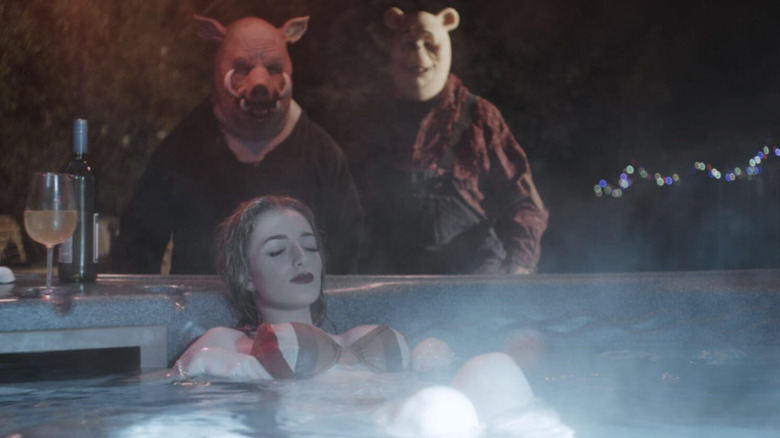
We need to talk about the masks. They're a problem. Pooh is meant to resemble an exaggerated, caricatured version of Disney's designs, but aged up to look like a bear in his 40s. The masks, however, have no articulation. The lips and features are static and rubbery, and there didn't seem to be much effort made to blend them with the actors' faces. Pooh and Piglet don't look like mutant animal monsters, nor do they look like cartoons. In effect, they look like men in rubber masks. One might expect a late-film twist wherein the characters remove their heads revealing their true selves underneath. I am sad to report that the monsters merely look terrible.
Often, a slasher movie can be forgiven for its banality or idiocy if there was a modicum of creativity to the gore and to the filmmaking. "Blood and Honey" possesses no such creativity, its kills as rote as any random slasher film from the early 1980s. One character has her head run over by a car, causing it to pop like a grape. For a fleeting moment, the audience may find a merciful titter at the sight of Winnie-the-Pooh behind the wheel of a sedan, but the visual is so fleeting, and the film so disinterested in enjoying its own silliness that it barely registers.
Where are the jokes? Where is the kill involving a character getting stuck in their own doorway? Or the dispatch of Pooh via a balloon? Where is the humor? The filmmakers have waited decades for Winnie-the-Pooh to be in the public domain, and this facile, rote, cheap, humorless bloodbath is all they could come up with. "Blood and Honey" will disappoint fans of Pooh, fans of irony, and fans of horror. Don't bother.
/Film Rating: 1 out of 10
Read this next: Horror Movies You Don't Want To Miss In 2023
The post Winnie-the-Pooh: Blood and Honey Review: Don't Bother With This Humorless Bloodbath appeared first on /Film.
The Force Engine for Star Wars Dark Forces improves Steam Deck & Linux support
Why Interview With The Vampire Filmmaker Neil Jordan Cast Tom Cruise As Lestat [Exclusive]
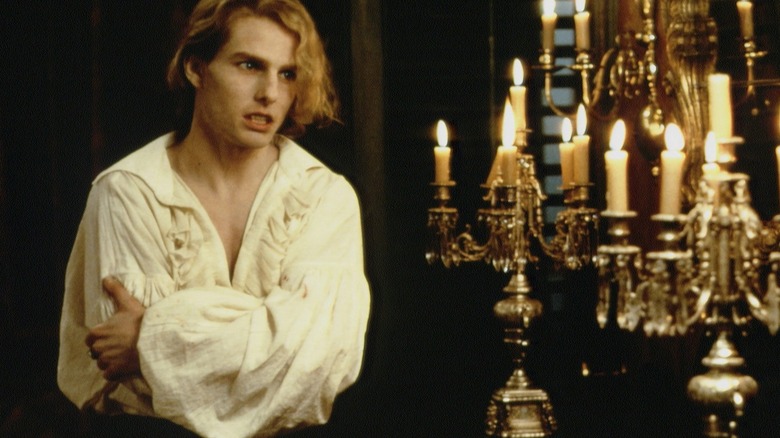
"I assume I need no introduction" utters Lestat de Lioncourt (Tom Cruise) in the closing moments of 1994's "Interview with the Vampire." This statement goes double for both the ruthless vampire and the movie star playing him.
However, Lestat is not the titular interview subject. That would be Louis de Pointe du Lac (Brad Pitt), Lestat's sired Creole companion. Lestat is a cunning, sadistic predator who grows frustrated as he fails to corrupt Louis. He's far removed from the heroes Cruise usually played before and since. The only Cruise role that compares is Vincent in "Collateral," but even then, Lestat is far more sardonic and ostentatious than that ice-cold hitman.
Even Anne Rice, the author of the source material, initially felt director Neil Jordan made the wrong choice picking Cruise to be Lestat. So why did he? /Film's Jack Giroux spoke with Jordan, who shed some light on why he chose Cruise to bring Lestat to the silver screen.
Why Tom Cruise?
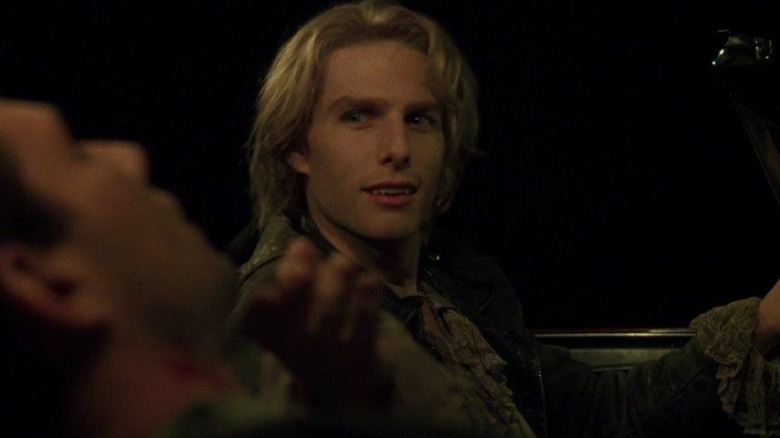
When talking about Cruise and Lestat, Jordan noted "an icy control and beauty." That's vampires in a nutshell, all the way back to Count Dracula himself. They're alluring, but no matter how perfectly human they look, they see us the same way we mortals see cattle. Cruise as Lestat embodies that — he charms Louis, but when he can't keep him or their daughter Claudia (Kirsten Dunst) under his thumb, he lets loose the monster inside.
Celebrity can be a hurdle for actors. If audiences can't move past their faces, it can be harder for them to sink into the role. However, Jordan felt that Cruise's fame would inform Lestat's character:
"I also saw, I suppose, that Tom's life — because he was the biggest star in the world at the time — he has to retreat to the shadows because he can't expose himself too much. [...] I saw kind of a parallel between the life of a vampire and the life of a very, very big star, let's put it that way."
Jordan felt especially satisfied with Cruise's casting since he and his star won out over their naysayers: "Everybody said [Cruise] was miscast, he proved them wrong, didn't he?" Yes, he did, for Cruise lights up the screen and stands out all the more opposite the more reserved Pitt.
Cruise's Lestat even got Rice to issue a mea culpa; the author said he, "did a wonderful job" and "got the essence of Lestat, he got Lestat's power and his charisma and his charm." Sometimes, an author can be so close to their creations that they wind up blind to the genius of new interpretations. Thankfully, Jordan was there to offer a different vision.
Read this next: The Best Horror Movie Performances Of 2022
The post Why Interview with the Vampire Filmmaker Neil Jordan Cast Tom Cruise as Lestat [Exclusive] appeared first on /Film.
This Neutron Star Explosion Was Perfect. Too Perfect - CNET
Carnival Row season 2 will be the final run on Amazon Prime
It’s time to suit up for our final trip to Carnival Row and we confirm season 2’s release time, date, and episode count, combined with a release schedule and where to watch guide.
It was previously confirmed that season 2 would be the final season of the show, but Amazon did not reveal why the show was being capped at two runs. Presumably, the substantial delay between seasons 1 and 2 – brought about by the pandemic and the birth of Orlando Bloom’s child – may have caused the studio to back out of further commitment.
Created by René Echevarria and Travis Beacham for Amazon and based on Beacham’s speculative screenplay, The Killing on Carnival Row, the neo-noir fantasy series, Carnival Row, is set in the titular location inhabited by mythical creatures and plagued with crime, starring Bloom, Cara Delevingne, Simon McBurney, David Gyasi, and more.
Where to watch Carnival Row season 2
The only place you will be able to watch Carnival Row season 2 is on Amazon Prime Video, as the show is exclusive to the platform.
Both US and UK fans of the series will be able to watch the new season through Amazon’s streaming service.
Amazon Prime is only available through a subscription, however, that begins with a 30-day free trial.

Carnival Row season 2 release time
Carnival Row’s season 2 release date is set for Friday, February 17, 2023, on Amazon Prime.
Following the release pattern on most Amazon Prime shows, season 2 will premiere at Midnight ET.
This means viewers in the west will receive the debut at 9 pm PT on Thursday, February 16, 2023.
Below, we have translated what the Midnight ET premiere is the equivalent of in your part of the world:
- United Kingdom – 5 am GMT
- Australia – 2 pm AEST
- Brazil – 1 am BRT
- Europe – 6 am CEST
- India – 9:30 am IST
- Japan – 1 pm JST
- New Zealand – 4 pm NZS
Nice to see you again, citizens. February 17th, we return to Carnival Row. pic.twitter.com/watCkCZqgH
— Carnival Row (@CarnivalRow) January 9, 2023
Carnival Row season 2 episode count and release schedule
The Carnival Row episode count for season 2 is confirmed to have 10 episodes, which is two installments more than the count of season 1.
Season 2 on Amazon Prime will begin streaming with a double-bill premiere on the aforementioned release date.
New installments will then be released weekly on a Friday and our full release schedule confirms when each episode will premiere.

By Jo Craig – jo.craig@grv.media
The post Carnival Row season 2 will be the final run on Amazon Prime appeared first on ForeverGeek.
I Am Legend 2 confirmed to follow the alternate ending of its predecessor
On the back of new details surfacing for I Am Legend 2, we confirm where you can watch I Am Legend’s alternate ending, reveal if it’s streaming, and explain the ending to get you up to speed with the sequel.
The post-apocalyptic horror has become a staple in the genre over the last decade, standing as one of the more moving zombie tales to date.
Directed by Francis Lawrence, the popular 2007 adaptation of Richard Matheson’s 1954 novel I Am Legend became a popular survival horror movie of its generation, starring Will Smith, Alice Braga, Charlie Tahan, Emma Thompson, and more.
Where to Watch I Am Legend alternate ending – Is it streaming?
There are a number of places where you can watch I Am Legend’s alternate ending, but the easiest place to revisit it is on Amazon Prime.
Amazon Prime is only available through a subscription that begins with a 30-day free trial, but the platform has clearly labeled which version is the alternate ending and is available for $14.99.
In addition to Amazon, the alternate ending is also available to buy on Google Play, and fans in the UK can stream this version on Sky or Now TV.
I Am Legend alternate ending explained
In the original I Am Legend ending, Robert sacrifices himself by orchestrating an explosion that consumes both himself and a number of the mutant zombies, allowing Anna and Ethan to escape.
In the alternate ending, however, Robert realizes that the reason the mutants are attacking him is that he captured the leader’s partner and tested on it. Upon releasing the test subject back to the mutant group, Robert is able to escape with Anna and Ethan, cure in hand, and leave for Vermont with them.
Both endings suggest Robert is far from the hero he makes out to be, testing and killing the mutants that still carry some form of humanity inside them. When audiences shared their negative reactions to the original ending, director Lawrence, decided to release the alternate ending.

I Am Legend 2 will follow the alternate ending
It was recently confirmed that the anticipated I Am Legend sequel would follow the alternate ending of its predecessor, treating it as canon.
Fans of the first movie will know that this is the only way for Will Smith’s character, Robert, to return in the sequel, since the protagonist died during the original ending but survived in the alternate.
Joining Smith on the sequel front will be Creed and Black Panther star, Michael B. Jordan, whose character remains a mystery for now.
It was also reported that the writer of the first movie, Akiva Goldsman, would be returning to produce the sequel.

By Jo Craig – jo.craig@grv.media
The post I Am Legend 2 confirmed to follow the alternate ending of its predecessor appeared first on ForeverGeek.
Researchers Warn of Critical Security Bugs in Schneider Electric Modicon PLCs
The Best Eero Wi-Fi Mesh Routers (2023): Eero 6, 6+, Pro 6, Max 7, and More Tips
Star Trek: Picard Season 3 Presents An Unpopular Opinion About A Beloved Ship
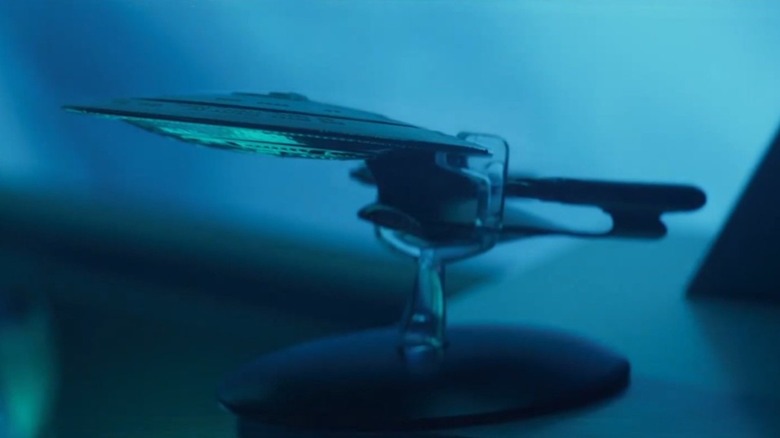
This post contains spoilers for the premiere of "Star Trek: Picard" season 3.
In the first episode of the third season of "Star Trek: Picard," Captain Riker (Jonathan Frakes) is drinking at Guinan's bar. The bar is recognizably retro, with familiar looking spirits on a glass shelf, booths for dining, and even neon signage advertising various beers. The only thing it's missing is a blinking sign declaring that Coors was FOR CaliFORnia. Riker is in town for an upcoming Federation holiday called Frontier Day, and he and Admiral Picard (Patrick Stewart) are scheduled to make inspirational speeches at celebratory event. While waiting in the bar, Riker notices that Guinan is doing something previously unthinkable: selling merch. The bar is heavily decorated with miniature scale models of recognizable Federation starships on stands.
The shelves, Riker notes, are awfully lousy with models of the Enterprise-D, the ship he served on for seven seasons of "Star Trek: The Next Generation." Guinan (Whoopi Goldberg, not appearing on this season of "Picard") also worked on the Enterprise-D for many years. The Enterprise-D was a Galaxy-Class starship, meaning it was quite large and suitable for families. Those who grew up watching "Next Generation" will likely be enamored of the ovals and curves of the Enterprise-D, along with its Jupiterian eye-shaped deflector. It's a much more elegant ship when compared to its more angular predecessor from the 1966 series.
For the moment, we will ignore the conceit that one would sell palm-sized souvenirs in a post-capitalist future with access to replicators. Why buy Guinan's souvenirs if 1. there is no money, and 2. you can make one yourself for free? This is not to be acknowledged.
The Fat Ones
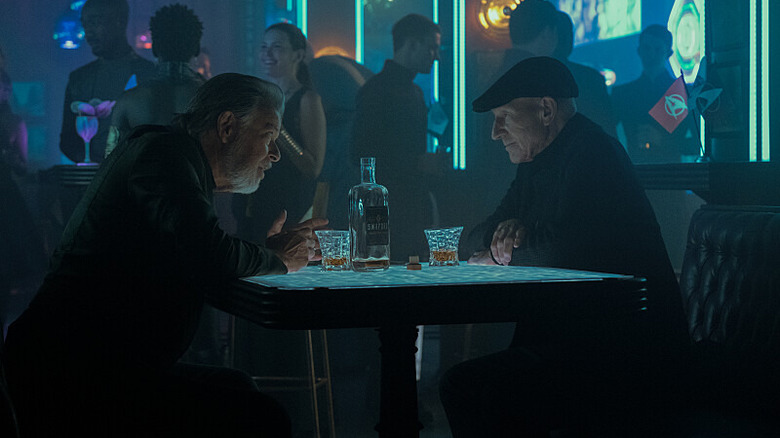
Riker asks the bartender cautiously why there are so many models of the Enterprise-D. The other ships, it seems, are being distributed with more frequency. The bartender replies that "no one wants the fat ones." Riker, of course, is immediately miffed, wounded that his old workplace would be so dissed. He asks that the bartender pour him another and leave the bottle.
This old Trekkie did indeed grow up watching "Star Trek: The Next Generation," so it's difficult to offer any kind of legitimate criticism of the Enterprise-D's design. If one spends too many years looking at a starship, it sort of becomes a regular feature of your subconscious. It becomes difficult to imagine it coming out any other way. Anecdotally, I once polled any "Next Generation" neophytes to comment on the design, and one peer pointed out that it might seem a little "top-heavy." This is fair. The Enterprise-D's saucer section is, when compared to its drive section, quite enormous. It's like a flying saucer with a handle attached.
Of course, it's hard to imagine that anyone would reject the Enterprise-D over other notable "Star Trek" vessels. Does someone actually prefer the hand trowel-shaped Intrepid-Class U.S.S. Voyager over the Enterprise-D? Or the ugly-as-sin Sovereign-Class Enterprise-E, a ship that looks like it was left on a barbecue grill? Rejecting the Enterprise-D as "the fat one" is a controversial take indeed. Trekkies the world over will want to tell that bartender to bite her tongue.
Also: there is something else notable about those little Enterprises. As it so happens, those are real-world souvenirs that you could buy long before "Picard" ever aired.
R.I.P. Eaglemoss
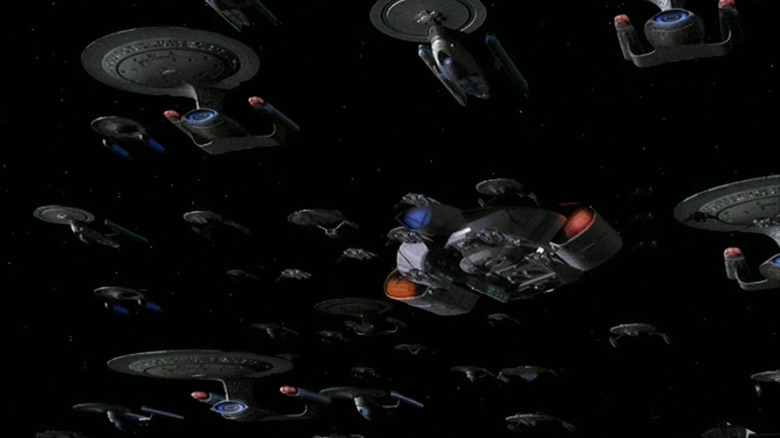
Trekkies who delve into the collector's market will instantly recognize Guinan's starship trinkets as the scale models produced by a company called Eaglemoss, a British manufacturer that was founded in 1975. For many years, Eaglemoss specialized in a variety of sci-fi and "Star Trek" trinkets, expanding greatly in 2011 when they merged with a second company called GE Fabbri. Since then, through a brand called Hero Collector, the company began offering thousands of models, figurines, and vehicles from many, many sci-fi and fantasy films and TV shows. Hundreds of "Star Trek" ships were made available through Eaglemoss, and one could even subscribe to a monthly service, getting one ship in the mail every month, along with a collector's magazine that would explain the context of the vessel in question.
Yes, this author owns a few Eaglemoss models.
As reported by TrekMovie in August of 2022, Eaglemoss has only recently shuttered its doors. No official statements were made by the company, so details on its closure are hard to come by, needless to say that Eaglemoss went bankrupt. Ben Robinson, the company's director of licensed products, only mentioned that for months Eaglemoss' higher-ups were trying to sell off pieces of the company. Other online rumors have theorized that the company's financial woes have a lot to do with new taxation laws that followed in the wake of Brexit, but those theories have not been confirmed anywhere.
A few companies have bought up small pieces of Eaglemoss, but currently, those collectibles can only be found on the second-hand market. Naturally, they are hard to find and quite expensive.
Perhaps, then, Guinan was being savvy in selling ships from a moribund company. More likely, though, the "Picard" showrunners merely bought merch themselves.
Read this next: Every Star Trek Movie Ranked Worst To Best
The post Star Trek: Picard Season 3 Presents an Unpopular Opinion About a Beloved Ship appeared first on /Film.
Hackers Using Google Ads to Spread FatalRAT Malware Disguised as Popular Apps
All Our Favorite Ways to Build a Better Breakfast Sandwich

Earlier this year, the failing Wall Street Journal shitposted their way into the discourse by suggesting people hit hard by inflation might save money by skipping breakfast. I couldn’t read the whole thing because it is, hilariously, paywalled. But I don’t feel like I need to, because while it’s true that eggs are…
RoboCop (1987) Ending Explained: A Working-Class Underdog
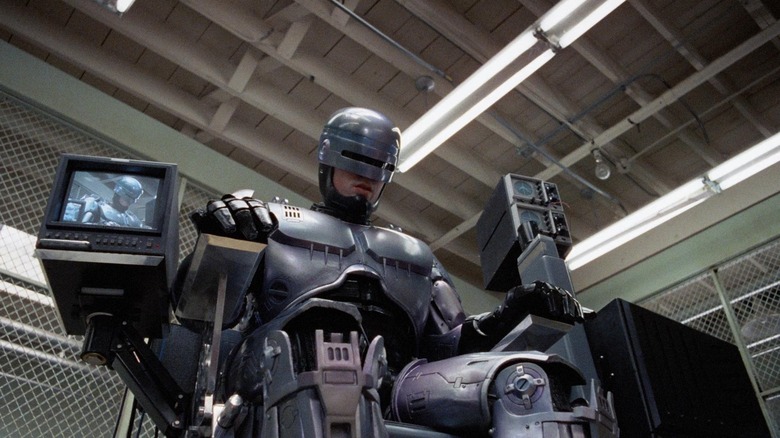
"RoboCop" was a hot favorite on the school playground when I was a kid. Stories of brutal cop killings and boardroom bloodbaths joined the head-popping scene from "Scanners" and the gruesome exploits of Freddy Krueger as the kind of viewing choice that separated the cool kids from the rest of us. Or at least, separated those who had access to their parents' video rental card from those who didn't.
I caught up with it again several years ago after a gap of about two decades, going in expecting a blast of pure '80s nostalgia. I got a blast alright, but there was nothing sentimental about it. Seeing it again as an adult made me realize that "RoboCop" isn't just a fun movie, it's a great one. Paul Verhoeven directs the hell out of it and there is plenty of substance and style to go with the over-the-top action.
Like all the best sci-fi dystopias, the prophetic satirical elements that largely went over my head as a kid have only become more relevant with age. It's ridiculous how much is packed in there, wickedly taking on corporate greed, rampant consumerism, cynical gentrification, and the privatization and militarization of the police, all while telling a genuinely moving story that touches upon themes of humanity and the soul.
"RoboCop" is Paul Verhoeven's masterpiece. In the hands of a lesser artist, a splattery action movie with so much on its mind might have seemed overstuffed, but the Dutch director never misses a beat and brings all the threads neatly together for a glorious fist-pump of a finale. What's not to love?
So What Happens In RoboCop Again?
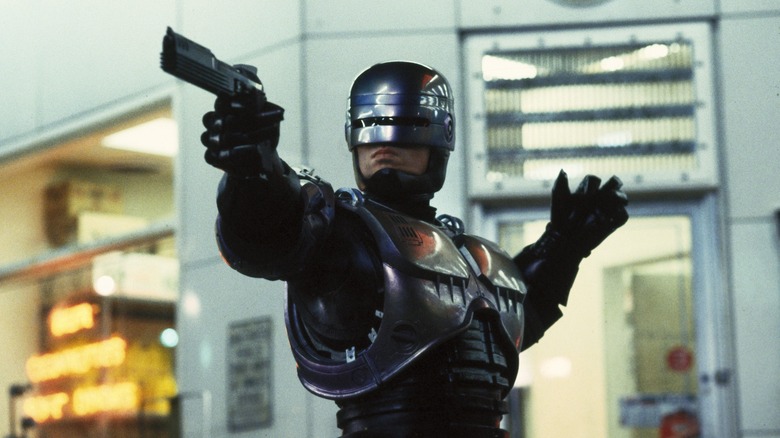
"RoboCop" is set in a dystopian near-future where Detroit is in the grip of vicious criminals like Clarence Boddicker (Kurtwood Smith) and his gang of cackling hoodlums. The embattled police force has recently been taken over by the appropriately sinister Omni Consumer Products (OCP), putting it in the dubious hands of corporate players looking to make a fortune with their latest line in mechanized law enforcers.
The company's villainous Senior President Dick Jones (Ronny Cox) seeks approval from his boss "The Old Man" (Daniel O'Herlihy) to roll out his ED-209 unit, a fearsome walking gunship that is still a little glitchy. When Jones's baby goes wildly on the fritz during a boardroom presentation, his ruthless coke-fuelled rival Bob Morton (Miguel Ferrer) jumps at the chance to push his alternative RoboCop program that will ostensibly give cyborg law enforcement a more human face. All he needs is a "sucker" to donate that face.
Enter Alex Murphy (Peter Weller), a serene police officer and family man who transfers to the blue-collar Detroit West police department. He partners up with butt-kicking Anne Lewis (Nancy Allen), and their first call puts them on the trail of Boddicker and his goons. Pursuing them to an abandoned factory without backup, Murphy is brutally murdered.
Morton now has his test subject and Murphy is resurrected as RoboCop, a gleaming robotic police officer ready to hit the streets and become the public's hero. He quickly blazes a trail through the city's lowlifes but there is a snag: Although he has supposedly had his brain wiped, ghosts of his former life emerge and he goes off-script, gunning for Boddicker's gang. This is bad news for Dick Jones, who is secretly supporting Boddicker to ramp up the fear factor in the city in preparation for his master plan.
Corporate Greed And The Police In RoboCop
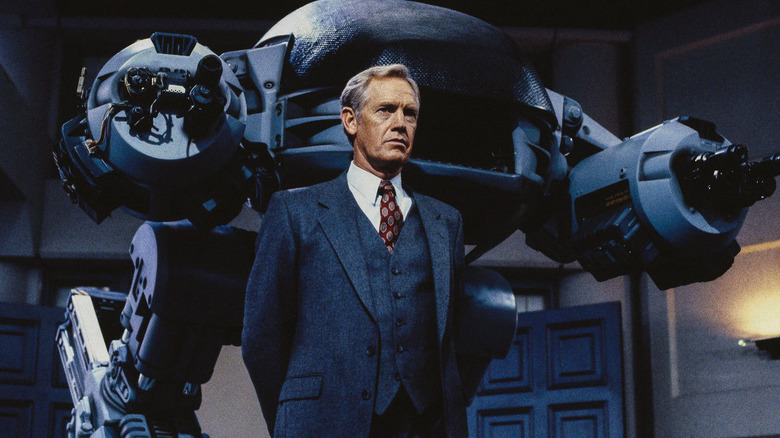
If the worst excesses of capitalism and Reagan-era "greed is good" economics are the broad target of the satire in "RoboCop," OCP and their ruthless takeover of Detroit's police force is the most crucial aspect to the story.
When it comes to how Omni Consumer Products like to do business, the clue is in the name. With their fingers already in numerous formerly non-profit pies like healthcare and the military, the corporation is omnipresent. Dick Jones's big plan is to take over Detroit's crime-ridden inner city and build New Detroit, a gleaming monument to soulless gentrification. In order to do this, he pays Boddicker and his gang to kill cops, spread fear, and drive people out of the area.
Then there is the potentially lucrative roll-out of his ED-209 unit, which Jones hopes will become the "hot military product of the next decade" if a trial run on the streets of Detroit proves a success. The gory disaster in the boardroom demonstration isn't a good omen, but who cares if it doesn't work properly? Jones also has the contracts for spare parts sewn up as well.
Bob Morton's RoboCop initiative is a hit with the public but no less cynical. Now working for OCP, police officers must sign waivers that pass ownership of their bodies to the company in the event of their deaths. Presumably, Morton expects to produce more than one RoboCop unit, which means he would potentially have a whole squad of undead cops with cyborg enhancements on the streets if he got the chance. Perhaps this is what Murphy anticipates later in the film when Lewis is badly injured and he says; "Don't worry, they'll fix you. They fix everything." Thankfully Lewis recovers from her wounds and is still very much human in "RoboCop 2."
RoboCop As An American Jesus
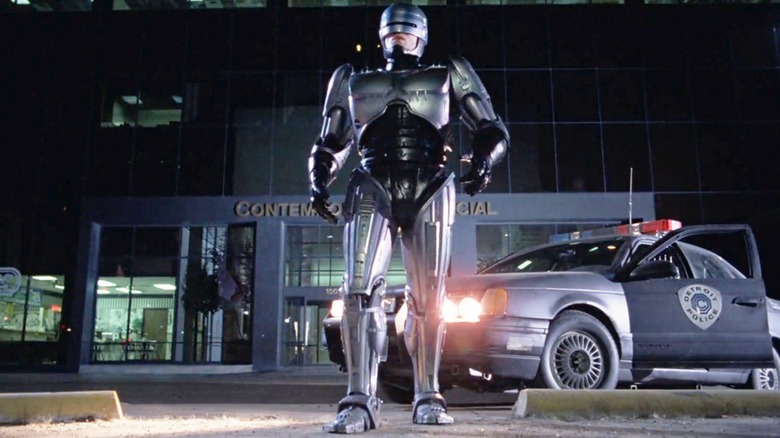
Paul Verhoeven has said that he considers RoboCop an "American Jesus," and there are certainly parallels to Christ in the movie. Alex Murphy arrives in the urban war zone as a slightly aloof, saintly character, emphasized by Peter Weller's performance. In the era of muscle-bound '80s action stars like Sylvester Stallone, Arnold Schwarzenegger, and Chuck Norris, he brings a far more ethereal quality to his role.
Murphy's execution by the gang is his crucifixion, a good cop who dies for our sins: Namely, the rampant capitalism that has allowed Detroit to degenerate into such a violent, scum-ridden, drug-plagued hellhole. Verhoeven doesn't push the symbolism too far in the scene, but it is almost as brutal as the beating Jesus takes in "The Passion of the Christ." Notably, the first shot pierces his palm ... well, blows his hand off entirely, but the message is clear.
After he is pronounced dead, Murphy is resurrected as RoboCop, the savior of Detroit. Later, Verhoeven even shoots him as if he's walking on water. The metaphor is there, but I'm not sure it adds up to all that much. RoboCop is more of an amalgam of many hero archetypes, including Jesus. His party trick of twirling his gun on his finger before holstering it is a direct callback to the Western heroes of the past, which has its futuristic equivalent in his son's favorite show, "TJ Laser." Going even further back, RoboCop literally looks like a knight in shining armor. Always shot from below for ultra-hero angles, his suit gleams brightly in the headlights of his patrol car when he rescues a damsel in distress from two scumbags trying to sexually assault her.
How Human Is Murphy?
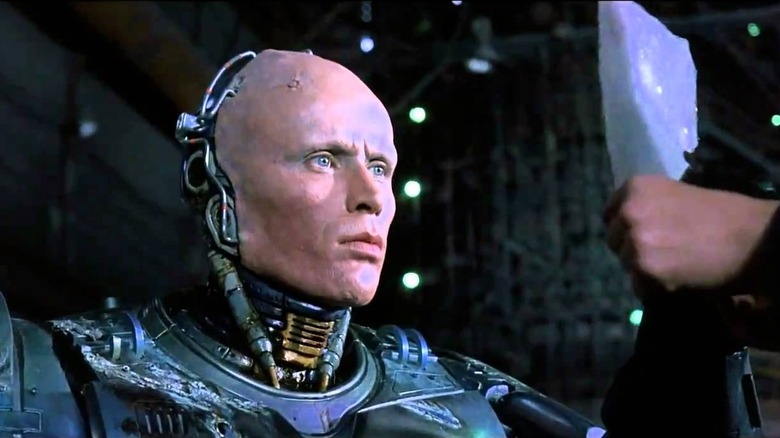
The thing that keeps me coming back to "RoboCop" is Murphy's gradual rediscovery of his identity and his humanity. It is handled beautifully, and the pathos goes hand-in-hand with the violence to make the conclusion pay off with such a glorious note.
Despite the brain-wipe, Murphy starts having flashbacks which lead him to investigate who he was previously. One of my favorite scenes is when he revisits his old house and visions of his wife and son vanish as he walks from room to room. It's a heartbreaking moment: No matter how much he finds out about his former self, the old Alex Murphy is dead and gone. Now he is just a soul trapped in the RoboCop chassis.
If the soul is the essence of our humanity, does that make Murphy still human, even though he is now mostly a cyborg? His brain may have been wiped, but he is still capable of emotions and feeling love and sadness for the family he has lost. The things that made him human aren't quite as easily erased as his memories.
It's not made clear how much of Murphy's old body remains. Bob Morton's callous instruction to lose the arm that the doctors managed to save suggests that most of it was a total write-off. He does get to keep his eyes, however, which is an important factor in Murphy's recovery of his humanity. If the eyes are the windows to the soul, then Murphy's are covered by RoboCop's black visor for a good portion of the film. When we finally see them again, they are filled with infinite sadness as he realizes what he has become and that he can never go back. One thing he can do, however, is get even.
The Ending
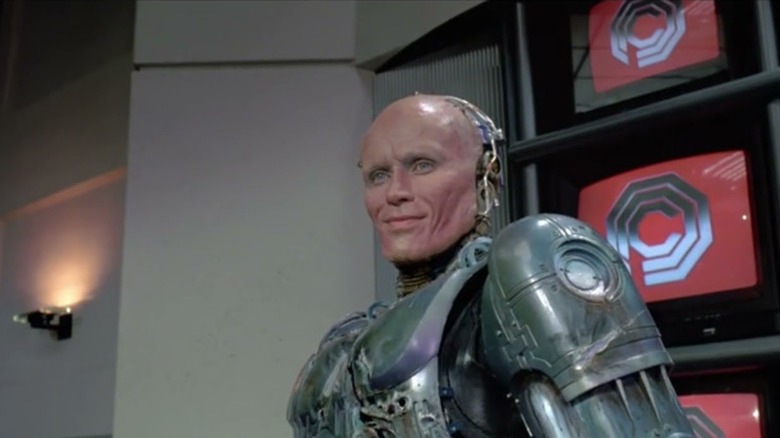
After Murphy and Lewis have taken out Boddicker's gang at the mill, it's time to settle the score with Dick Jones. Previously, we saw that RoboCop was unable to arrest Jones due to the shadowy Directive 4, a classified failsafe that prevents him from acting against OCP Executives. A kind of Asimov's Law for corporate scumbags, if you will.
Crashing into a board meeting, Murphy uses his data spike to reveal Jones's true intentions to the other board members. It's a neat touch; he used the spike to kill Boddicker, and now he's using it to kill Jones's career.
Jones gets desperate and takes his boss hostage at gunpoint, but Chief Executive isn't as doddery as it seems. He thinks quickly and fires Jones on the spot. No longer an employee of OCP, directive 4 is overridden, allowing Murphy to blow him away. The Old Man praises his shooting and asks his name. "Murphy," he responds, with a huge smile.
This ending plays out so triumphantly for two reasons. Firstly, Murphy goes through an incredible ordeal to get here. He is shot, killed, revived, turned into a robot, betrayed, shot again by about a hundred cops, battered, crushed under a pile of steel, and skewered through the chest. It's one hell of a journey, and it would take a stony heart not to feel overjoyed for him when he finally reclaims his identity as Murphy.
Secondly, it is a victory for a regular guy like Murphy over grasping millionaires like Dick Jones and his corporate buddies -- something that plays even better in the current climate than it did back in the '80s. No wonder there are plans to erect a RoboCop statue in Detroit; he's a true underdog and working-class hero for the city in the way Rocky Balboa is for Philadelphia.
Read this next: Sci-Fi Box Office Bombs That Deserve A Second Chance
The post RoboCop (1987) Ending Explained: A Working-Class Underdog appeared first on /Film.
NVIDIA GeForce RTX 4080 / RTX 4090 Linux Performance
Vulkan 1.3.241 Released With Another Extension To Help VKD3D / Direct3D 12 Emulation
Review: Wild Hearts
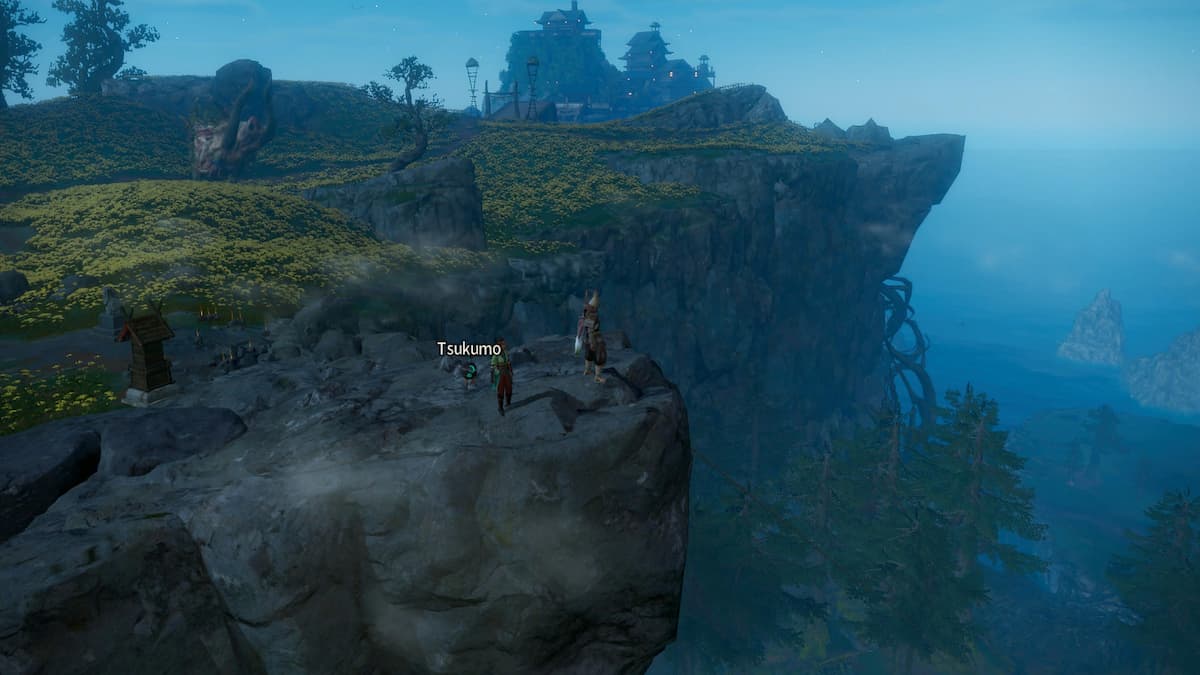
Wild enough, and a lotta heart
When I first picked up Dynasty Warriors 2 from a Blockbuster Video over two decades ago, I never expected that I'd play so many Omega Force games throughout my lifetime. The cover called to me like a siren's song, and I was introduced to what would become an endless onslaught of hack and slash games pretty much every year from there on out.
But many folks have forgotten that they also helmed the Toukiden series: an action romp planted firmly in the hunting genre. Well, now they're back with Wild Hearts, and I couldn't be happier about it.
[caption id="attachment_363798" align="alignnone" width="640"] Screenshot by Destructoid[/caption]
Screenshot by Destructoid[/caption]
Wild Hearts (PC, PS5 [reviewed], Xbox Series X/S)
Developer: Omega Force
Publisher: Electronic Arts
Released: February 17, 2023
MSRP: $69.99
Wild Hearts doesn't ask too much of the player outright, and is one of the more accessible hunters I've played to date. You mainly just need to learn a few terms (Azuma is the game world, Karakuri are basically magic structures/tools, and Kemono are big monsters) and you're on your way. The game's tutorials are thorough, but woven throughout the storyline so that the onboarding isn't tedious, even upfront. A few hours in though (or way sooner depending on your pacing), and Azuma is your oyster.
The flow of the game generally relies on hunting monster after monster (traversing new themed regions, which are like giant sandboxes in a semi-open world format) until the end, but those regions are a blast to walk, zip, and jump through. One thing I really harped on in the review in progress was how stunning the setting was: and that feeling lingered throughout my entire experience with Wild Hearts. While the PC version of the game is apparently having some issues with certain rigs, the PS5 edition didn't give me any major technical trouble to speak of.
Initially, you're introduced to a Karakuri platform that also serves as a springboard. The design is simple and elegant, and showcases Wild Hearts' core strength of ingenuity. You can simply place these platforms on top of each other and climb them to traverse a cliff. You could also use them in battle to spring up and land a jumping slash on an enemy. Or, you could arrange them like a barricade to trip up a Kemono. As you acquire more Karakuri, more of these strategic options pop up, both expressed and implied. Ziplines are one of the more popular elements from the pre-launch period, and will likely result in a lot of fun highlight reels.
https://www.youtube.com/watch?v=_grFGQ2oWUQ
The key is that you're creating your own structures, both permanent and temporary. While normal Karakuri are often fleeting, the tier above (Dragon Karakuri) operates more like a base building simulator. You'll be forging fast travel tents, upgrade stations, and points of attack, all of which can be enjoyed online with up to two other people. To expand and conquer you're encouraged to explore, which will in turn lead you to more materials to create stuff, Tsukumo (cute little robot things that serve as combat companions and a collectible), and more Dragon Karakuri resources.
More than any other hunting game I was inspired to play online (which I was able to do even in this pre-release period), and I'm happy to say I had a blast. Teamwork really makes Wild Hearts, and feeds into the creative expression I was mentioning earlier. You'll see completely different weapon types, builds, and ways to use Karakuri if you play online. Instant matchmaking options as you enter a hunt are key, as I'd simply press a button and be on my way.
Combat is engaging, but also forgiving. Wild Hearts' secret weapon is the over-the-top slide dodge, which will allow vigilant players to move out of harm's way in a super satisfying manner. Plus, multiplayer and the liberal use of Karakuri will help you feel like a genius while having a ton of fun in the process. Combos for each weapon type are simple but effective, with a few specials and super moves thrown in to ensure that the skill ceiling is high enough to propel veteran hunter fans.
[caption id="attachment_363799" align="alignnone" width="640"] Screenshot by Destructoid[/caption]
Screenshot by Destructoid[/caption]
I was also encouraged to go out of my comfort zone constantly. I'd throw Karakuri up just for fun to see what happened. Or try out a completely different and wild weapon type (like a killer umbrella) while still contributing to the hunt (or doing fine solo). This is a fantastic hangout game, both solo and with friends (or even randoms). I spent more time with Wild Hearts than the developer-recommended 30 hour campaign completion run because of this principle.
Although many core genre elements have been streamlined, there is a bit of clunk here. Some folks may find Wild Hearts slow going at first, especially in terms of traversal. Monsters running away multiple times in a bout can be frustrating, even when you have ample fast travel points and ziplines available. There isn't a lot here story-wise to latch onto, but again, I found myself wholly buying into the allure of Azuma itself, which is one of the more fascinating and pronounced game worlds I've seen in quite some time).
While the community will ultimately decide whether or not Wild Hearts lives on as long as any given Monster Hunter iteration, I hope it does; and that the team delivers on whatever confirmed free content is on the way. It's not every day a high budget hunter arrives on the scene, and there's more than enough room for several of them.
[This review is based on a retail build of the game provided by the publisher.]
The post Review: Wild Hearts appeared first on Destructoid.
American McGee is still trying to make Alice: Asylum a reality

American McGee is still trying to turn his theoretical Alice: Asylum into a reality. The last game in his dark action-platformer series, Alice: Madness Returns, released more than ten years ago, and since then McGee has been funding development through a Patreon which, at the time of writing, currently has 3,192 paying members. In 2021, McGee released the first draft of a script, and now he’s back with a 414-page design bible, the announcement of a partner studio, and an odd plea to EA.
World Risks Descending Into a Climate 'Doom Loop', Warn Thinktanks
Read more of this story at Slashdot.
Chris Inglis Steps Down as US National Cyber Director
The former NSA deputy director Chris Inglis was picked 17 months ago to be President Joe Biden’s top advisor on cybersecurity issues.
The post Chris Inglis Steps Down as US National Cyber Director appeared first on SecurityWeek.
Star Trek: Picard Season 3 Features A Small Tribute To A Forgotten Starfleet Captain
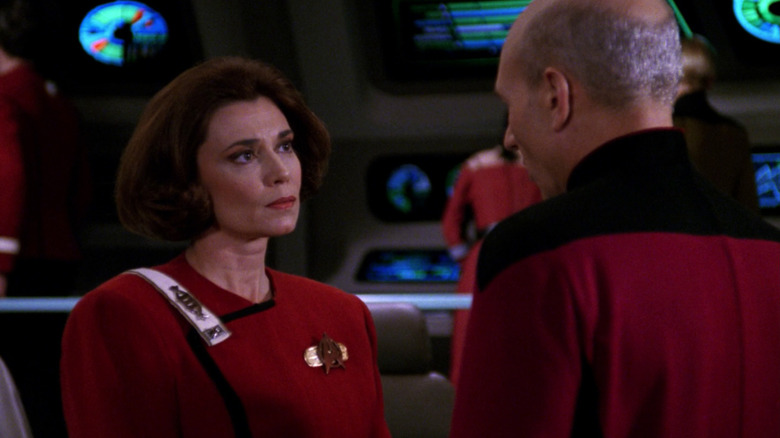
This post contains spoilers for the third season premiere of "Star Trek: Picard."
The new season of "Star Trek: Picard" begins with a dramatic event. When the show catches up with returning "Picard" character Raffi (Michelle Hurd), she has been given a special Starfleet assignment to infiltrate the criminal underworld and track down shady weapons dealers who have been stealing from the Federation. A former addict, Raffi has connections with drug dealers and knows how to traverse Trek's criminal fringe. "Picard" introduces a new wrinkle into Trek canon as well. It seems the Federation's scientific research facility, the Daystrom Institute, has a high-security satellite where they store dangerous technologies, secret samples, and other potentially destructive items. It doesn't seem wise to keep all of their evil eggs in one basket, so to speak, but Raffi has been keeping a close eye on that facility. Something, she finds, has been stolen.
It seems an unknown burglar has stolen what is essentially the central aperture device from the video game "Portal." Its user would be able to create a two-end wormhole at any two points in space. One could create a portal in front of a fleeing starship and force it to exit on the other side right in front of you. Or, as it's used in "Picard," one could create an entrance portal below a building, forcing it to fall through its exit, placed a few miles over and several stories up. The unknown assailant sucks down an enormous building and drops it on its neighbors.
Many people die in this act of terrorism, as the building in question was Starfleet Recruitment headquarters, and many were gathered there for the unveiling of a new statue honoring the late captain, Rachel Garrett.
Yesterday's Enterprise

Honoring Captain Garrett with a statue seems a fair and honorable thing to do, given what fans of "Star Trek: The Next Generation" know about her. Garrett, as played by Tricia O'Neil, only appeared in one episode of "Next Generation," but it was one of the more impressive episodes of the series. And, golly, Captain Garrett faced a terrible decision in it.
In "Yesterday's Enterprise" (February 19, 1990), the Enterprise-D is merrily sailing through space when a rift in spacetime randomly opens in front of them. A damaged starship sails through. In an instant, everything on the Enterprise-D changes. The lights dim, the uniforms change, and the outlay of the bridge alters. Most dramatically, Lt. Tasha Yar (Denise Crosby) is standing at the tactical station. Lt. Yar had died almost 18 months previous.
The ship that came through the rift was none other than the Enterprise-C, captained by Rachel Garrett. Her ship was being severely buffeted in a vicious battle when a rift opened up and she fled to safety. The rift, however, also brought her and the Enterprise-C 20 years into the future. In disappearing from the above-mentioned vicious battle, the Enterprise-C unwittingly instigated an ongoing war. Thanks to causality, Picard and the Enterprise-D were now fighting in that war, and Starfleet was a much more militant, weapons-forward organization. Only Guinan (Whoopi Goldberg) seems to vaguely recall that something has changed about the timeline.
Picard reveals that Starfleet is most assuredly losing the war, and the only way to win it was to send the Enterprise-C back to its own time ... to be destroyed and captured, thereby preventing the war altogether. Garrett is killed in battle before she can make a decision.
Her statue can be seen in the above picture. It's red.
All My Troubles Seemed So Far Away.
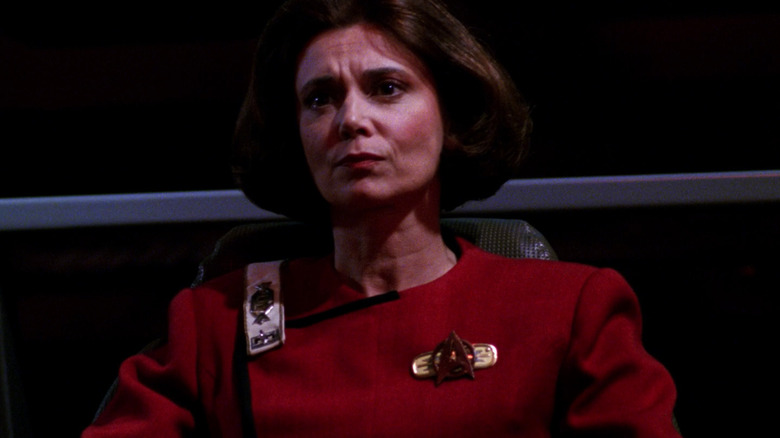
Captain Garrett, a resolute character -- as all Starfleet captains must be -- was faced with several options, all of them bad. She wanted to join the war effort in Picard's present, but her ship was too damaged and too out-of-date to offer any real assistance. She could return to her own time, knowing full well that she and her crew would be killed by a Romulan fleet. She also understood that taking weapons technology back from the future would unduly taint the timeline. It seemed that she could be a burden on the war effort in Picard's time, or dead in her own. The decision was taken out of her hands when a chunk of metal became lodged in her brain.
"Yesterday's Enterprise" is not only a fun episode in terms of its sci-fi/causality-related story, but also a wonderful tragedy about a no-win scenario. "Star Trek" is so devoted to notions of pacifism and preventing war, that Captain Garrett understands she needs to sacrifice herself and her ship in order to stop it from happening. Captain Garrett, while best known to Trekkies for dying, briefly represented Starfleet ideals to a T.
In the early years of the 25th century -- many years after her death -- Starfleet erected a statue of Captain Garrett in front of the organization's recruitment center. Sadly, just as it was revealed, another portal opened up in the vicinity, and the statue was sucked through, giving Garrett another kind of death. Some fates, it seems, cannot be avoided.
Read this next: The Main Star Trek Captains Ranked Worst To Best
The post Star Trek: Picard Season 3 Features a Small Tribute to a Forgotten Starfleet Captain appeared first on /Film.
Star Trek: Picard Season 3 Teases An Eventful Life For A Beloved Character
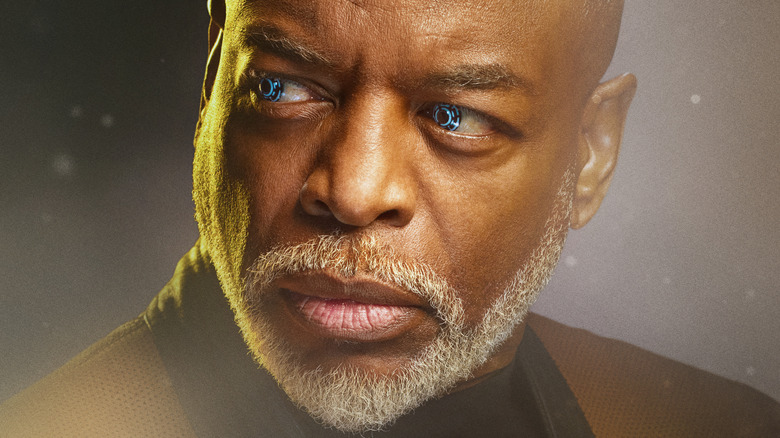
The third season of "Star Trek: Picard," debuting on Paramount+ on February 16, has boasted a reunion of most of the main cast of "Star Trek: The Next Generation." Previous seasons have featured returns from Brent Spiner, Jonathan Frakes, and Marina Sirtis, but this new season will add Gates McFadden, Michael Dorn, and LeVar Burton as well. This will not just be a fun nostalgia trip for Trekkies who ache to see some old "Star Trek" favorites in the same room again (the first time since "Star Trek: Nemesis" in 2002) — it will also slake some curiosity as to what these characters have been doing for the past several decades.
"Star Trek: Picard" shows what the title character (Patrick Stewart) has been doing now that he's rounding 100 years of age, but what has Worf (Dorn) been up to? Or Dr. Crusher (McFadden)? Or Geordi La Forge (Burton)? There's swaths of mythology to explore.
The futures of the characters were previously teased in "All Good Things..." (May 23, 1994), the final episode of "Next Generation." That episode began with a flash forward to a potential alternate future wherein Picard was, as in his own series, working on his family vineyard. He is approached by a now-retired Geordi who is no longer wearing his visor (the appliance that allowed him to see), and is sporting a pair of high-tech eyeballs instead. He talks about his new profession, his wife, and his three kids. A lot happened in his life between then and now.
It seems that Geordi will have had a similarly eventful life in the timeline of "Picard." Indeed, there will be several notable parallels between "Good Things" Geordi and "Picard" Geordi.
A Tale Of Two Geordis
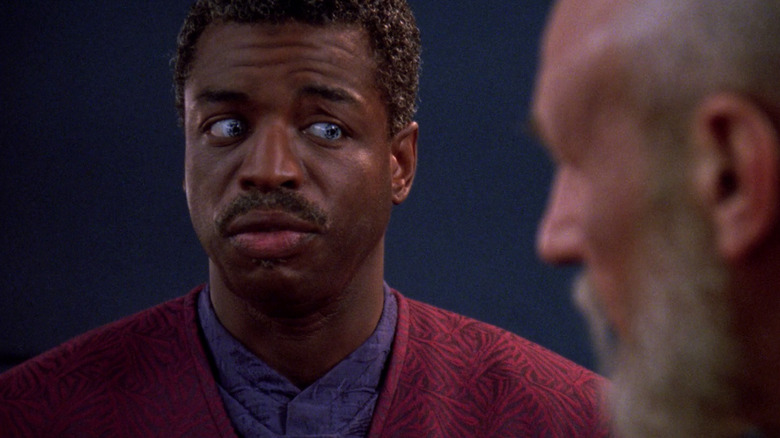
Geordi La Forge was, for those unfamiliar, the hard-working chief engineer on the U.S.S. Enterprise. He had a strong mind for machines, but was socially awkward and rarely able to go on dates or engage in romantic relationships. Notably, in the episode "Booby Trap" (October 30, 1989), Geordi had to create a holographic laboratory to solve a technical crisis, and interact with a holographic version of the Enterprise's builder, Dr. Leah Brahms (Susan Gibney). Geordi ultimately fell in love with the hologram, an awkward situation to be sure. It was made more awkward when Geordi later had to meet the real Leah Brahms in person. It was made awkward-est when the real Brahms found the holographic Brahms.
Despite the awkwardness -- and the fact that Brahms was married -- the two seemed to eventually wind up together. In "All Good Things..." the ex-engineer talks about Leah and his three children, Sidney, Alandra, and Bret. He's a novelist now (Picard mentions that his latest protagonist was too flamboyant), and his daughter Sidney is in Starfleet Academy.
In "Star Trek: Picard," there isn't exact mention of Leah Brahms, but Sidney (Ashlei Sharpe Chestnut) has not only graduated from the Academy, but is now working at the conn position on the bridge of the U.S.S. Titan. She mentions that she and her father are not on the best of terms, although he does get along with his other daughter, Alandra. The season's plot will take the Titan to a nearby museum, where notable artifacts are on display, ready to be visited by historians and curious tourists. Note to Trekkies: Prepare your nostalgia glands for that scene. You'll recognize a lot of what's on display.
The artifacts are also in good hands. Geordi runs the museum.
From 'Nemesis' To Now
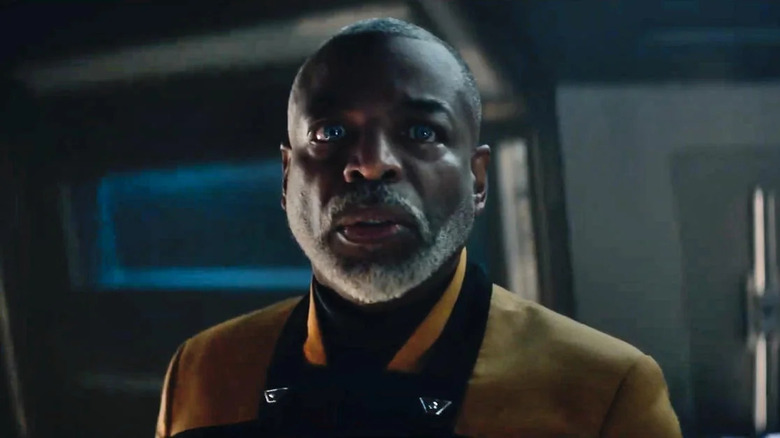
The movement of Geordi La Forge from ship engineer to museum curator must have been long and dramatic, and Trekkies will likely have a wonderful time filling in the gaps in the character's life. Indeed, this missing span of time, from "Nemesis" to now, is the kind of gap beloved by the writers of tie-in "Star Trek" novels. It will only be a matter of time before authorized-but-non-canonical stories of Geordi's life at the museum will be written.
Indeed, a "Star Trek" series set at a museum sounds like a dandy pitch unto itself. Not only would it provide the nostalgia that Trekkies love, but it opens up a whole new book of potential technobabble. If Burton is game, I'd like to arrange a meeting with the people at Paramount+.
Geordi was always something of an innocent character — enthused by machines, genial, professional, and at his wit's end with dating. The "Picard" Geordi has grown and changed so much, that fans will only be excited to see him as he is now. Time has passed for these characters and "Picard" has wisely allowed them to change.
Read this next: 11 Reasons Why The Next Generation Is The Best Star Trek Show
The post Star Trek: Picard Season 3 Teases an Eventful Life For a Beloved Character appeared first on /Film.
Cybersecurity health and how to stay ahead of attackers with Linda Grasso
Linda Grasso of technology blog DeltalogiX discusses cybersecurity trends and the human and technology connection of cybersecurity.
The post Cybersecurity health and how to stay ahead of attackers with Linda Grasso appeared first on Microsoft Security Blog.
1976's Carrie Ending Explained: Feminine Rage, Unleashed
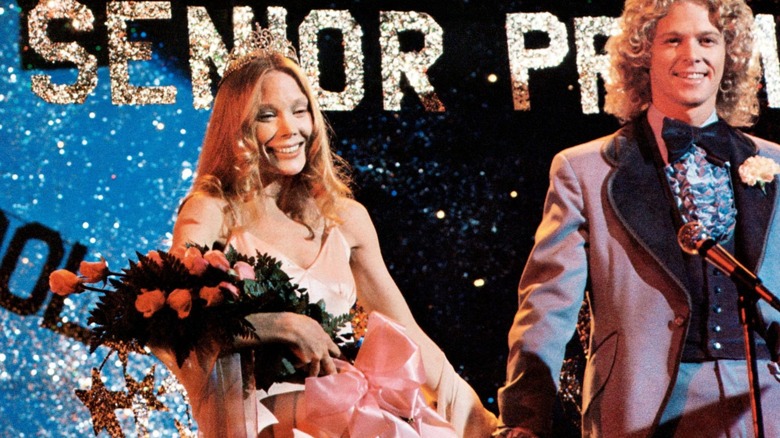
In Brian De Palma's "Carrie," the image of Carrie White (Sissy Spacek) doused in pig's blood after being crowned prom queen emerges as a haunting portrait of a woman wronged. Minutes before her bullies humiliate her onstage, Carrie exudes an almost angelic beauty, a reflection of the compassion she holds in her heart despite being bruised by the cruelties of life. However, the moment her pretty pink prom dress turns red while bystanders look on in horror, something innate snaps inside Carrie. No longer does she extend compassion to those who do not deserve it — and even those who do. Primal feminine rage takes over, amplifying her telekinetic abilities, which unleash hell on Bates High. The message is clear: Vengeance is swift and uncompromising when an ostracized teenager decides to step into her power.
De Palma consciously modeled this enduring climactic image of Carrie on Gustave Moreau's painting "The Study For Lady Macbeth," which portrays the luminous subject flanked by what seems like rivers of blood. The metaphor of blood being innately connected to the reclamation of power (or an un-washable stain representing guilt, in Lady Macbeth's case) is developed throughout "Carrie," as the film begins with the titular figure being mocked for getting her period in the school shower. Both Stephen King (whose acclaimed novel the film is based on) and De Palma draw traditional (and now-dated) parallels between menstrual blood and empowered womanhood, although this biological process is mocked and shunned in the public eye.
Etching a character arc where telekinetic powers are inextricably linked to notions of womanhood can be problematic— but in De Palma's able hands, "Carrie" unravels like a taut horror-thriller. Its splashes of dark comedy only complement the film's binary tone, which oscillates between the saccharine and the gothic.
Her Very Existence, An Act Of Rebellion
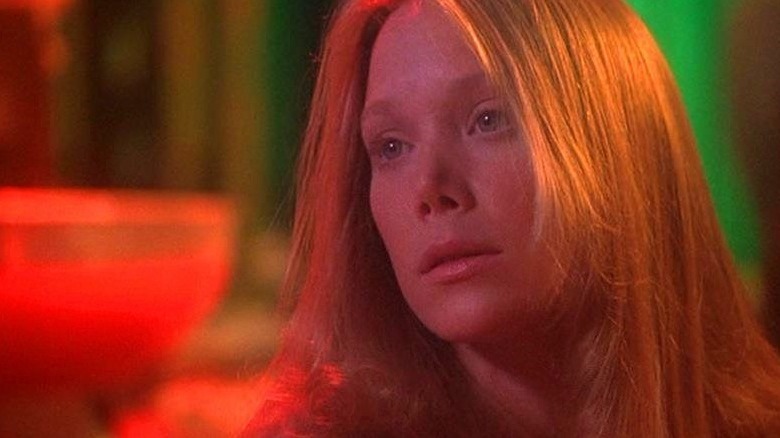
"Carrie" resonates with audiences across the board for many reasons. First and foremost, it etches a compelling, relatable portrait of teenage angst, underlining the growing pains of finding your identity in a world that feels rigged against you. High school can be an especially cruel space for those who do not fit into societal expectations of normalcy, a feeling that is heightened when one is bullied and emotionally abused. Carrie does not have any support systems that she can rely on: Her home environment is abusive and hostile, as her overbearing mother Margaret (Piper Laurie) perpetually torments her with a vitriolic brand of religious fundamentalism. For Margaret, the world is either sacred or profane, and any demonstration of autonomy is sinful in her eyes, which makes her hound Carrie with renewed vigor.
The only times when Carrie feels safe is in her own presence when she cradles herself in her arms and allows herself to process the extent of her powers. Being endowed with the ability to influence objects with your mind can be disorienting, but Carrie does not immediately abuse her telekinetic abilities for thrills or vengeance. Instead, she radiates with the quiet confidence of someone who is gradually aware of what they're truly capable of and embraces her sexuality by rejecting her mother's attempt to demonize her desires.
Although Carrie's story has been told and retold via various lenses and assumes many tints, the heart of the story remains the same: It is about a girl who experiences the horrors of isolation, where her very existence becomes a quiet act of rebellion. When pushed too far, she brings about literal carnage and bloodbath, too broken to care whether those trapped inside are cruel or kind-hearted.
The Many Endings Of A Blood-Soaked Tale
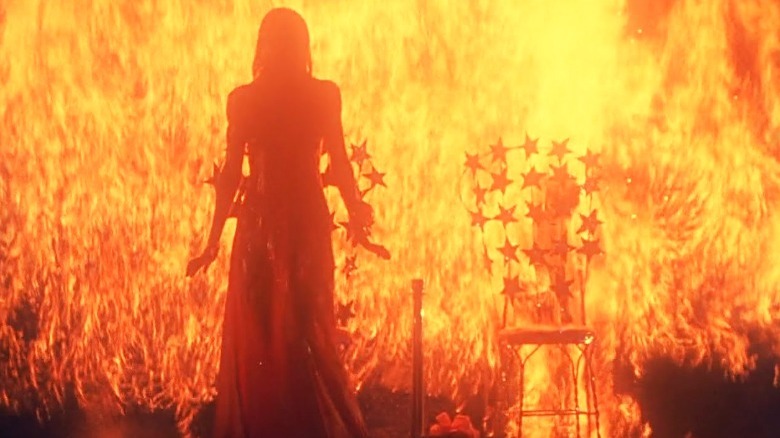
Stephen King, who endorses Brian De Palma's adaptation of his novel, has stated on many occasions that he considers the film's ending more fitting than that of the novel. Those familiar with the novel would agree that while King's ending is suited solely for the purposes of novelistic storytelling, De Palma's highly-stylized, aesthetically-brilliant rendition of the ending works better from a purely cinematic point of view. Carrie's breakdown in the novel is much more deliberate and brutal, as she consciously seeks out her classmates to torment them and makes sure that they are beyond outside help. In fact, the school alone is not the target of her incandescent rage: Carrie makes sure that the whole town suffers her wrath, as she detonates the main gas lines and hunts down her tormentors. As she is on the verge of dying, Sue approaches her, and the two connect on a visceral, psychic level before Carrie breathes her last.
In contrast, De Palma utilizes his telltale split screens to unravel a saga of blood-soaked revenge that seems more guttural and trance-induced than consistently deliberate. Yes, Carrie shuts her classmates inside the burning building, but she does not seek out her bullies after her telekinetic floodgates open. Instead, she is forced to explode the car her tormentors are in to safeguard herself, and has no choice but to crucify Margaret after she stabs her daughter in the back. Heartbroken and betrayed by her own kin, Carrie screams in agony, allowing her power to consume and destroy, and she dies after her house topples under the weight of her trauma-fueled angst.
However, the crowning glory of De Palma's ending is the dream sequence that is the stuff of nightmares: the bloodied hand of a dead girl rising from the grave.
The Unshakeable Weight Of Trauma
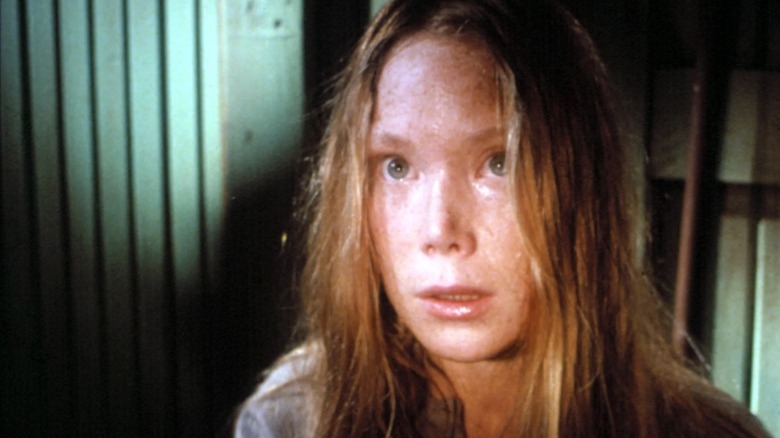
Unlike Stephen King's ending, which settles for an imperfect, yet compassionate mirroring between two complex female characters, Brian De Palma's ending lingers on rage, which comes back to haunt from beyond the grave. Sue, who alternates between bully and sympathizer, ultimately finds herself identifying with Carrie's pain. However, there is no closure for either Carrie or Sue — while Carrie is crushed under the weight of her own pain, Sue is compelled to carry the guilt of Carrie's death, which is now a source of horror to her. Even the way in which Carrie reaches out to Sue in the dream is aggressive, as her hand shoots up from her grave and grabs Sue, pulling her inside the crypt.
Although Sue is not nearly as cruel as the other bullies at school, she ends up shouldering the guilt of Carrie's tragic demise, which fuels bottomless grief and the fear of suffering a similar fate. Despite De Palma's sympathetic portrayal of Carrie, this shock ending paints her as a creature of terror in Sue's mind, who will now be forever haunted by the specter of a girl wronged. Within the ambit of genre tropes and the film's gothic overtones, this sequence works remarkably well, jolting audiences out of a latent state of complacency or the misconception that the worst is truly over.
If anything, this ending is more tragic. Despite attempts by those like Sue to understand and comfort Carrie, she breathes her last feeling cornered and betrayed by the world. Her rage, linked to her personhood and autonomy, momentarily paves the way to liberation in the form of vengeance, but is too much to sustain her. In the end, she remains condemned, even in death, only understood in surreal fragments through channeled feminine grief, and rage.
Read this next: All 59 Stephen King Movies Ranked From Worst To Best
The post 1976's Carrie Ending Explained: Feminine Rage, Unleashed appeared first on /Film.
Love & Death Trailer: Elizabeth Olsen Is An Ax Murderer In This Series Inspired By A True Story

True crime media seemingly won't go away, and with the sheer quantity of films and television shows in the subgenre, it feels as if there are more low-quality programs than those of higher quality. However, if the trailer for HBO Max's upcoming limited series "Love & Death" is anything to go by, we could have a very high-quality and suspenseful series coming soon to our screens.
While this may be a story some of you may be familiar with, allow us to walk through the tragic tale being adapted by David E. Kelley for the streamer. Candy Montgomery (Elizabeth Olsen) was considered the perfect housewife in 1980s Texas until the charming Allan Gore (Jesse Plemons) entered her life. The two begin an affair, which threatens her friendship with his wife Betty (Lily Rabe). As tensions and secrets build, Candy reaches a brutal breaking point, resulting in one of the state's most infamous crimes.
Check Out The Love & Death Trailer
Kelley, who wrote "Big Little Lies" for HBO, wrote the seven-episode limited series, while Leslie Linka Glatter served as the series' director. While the Candy Montgomery case was examined in 2022's Hulu series "Candy," this iteration has a particular advantage over that one, and that is its source material. "Love & Death" is adapted from the reporting of Jim Atkinson and John Bloom (also known as the cult horror host Joe Bob Briggs), particularly their book "Evidence of Love: A True Story of Passion and Death in the Suburbs." This collection, along with their reporting in the Texas Monthly, is widely considered the definitive account of the Montgomery case, so expect a lot of sordid and unexpected details to be brought to the small screen.
Joining Olsen and the other aforementioned names will be Patrick Fugit, who will portray Candy's husband Pat. Krysten Ritter, Keir Gilchrist, Elizabeth Marvel, Beth Broderick, Brian d'Arcy James, Mackenzie Astin, and Bruce McGill will also star in the series.
"Love & Death" will premiere at the SXSW Film & TV Festival on March 11, 2023. Three episodes will then be released on HBO Max on April 27, with each subsequent episode releasing weekly until May 25. Read the show's official logline below:
"This riveting drama, written by David E. Kelley and directed by Lesli Linka Glatter, tells the true story of Candy and Pat Montgomery and Betty and Allan Gore – two churchgoing couples enjoying their smalltown Texas life... until an extramarital affair leads somebody to pick up an axe."
Read this next: The Best TV Shows Of 2022, Ranked
The post Love & Death Trailer: Elizabeth Olsen is an Ax Murderer in This Series Inspired by a True Story appeared first on /Film.
Musk Warns AI 'One of the Biggest Risks' To Civilization
Read more of this story at Slashdot.
RIP Internet Explorer, 1995–2023

It’s official: Internet Explorer is dead. Microsoft confirmed as much on Tuesday with an update to the Internet Explorer desktop app support page: “The retired, out-of-support Internet Explorer 11 desktop application has been permanently disabled through a Microsoft Edge update on certain versions of Windows 10.” Ouch.
Cocaine Bear drops 8-bit promotional tie-in game with Pac-Man vibes

Pac-Man, but it's illegal
What do you get when you cross a bear with a huge bag of cocaine? Well, the answer's yet to be revealed, as the upcoming film Cocaine Bear isn't released until February 27. However, in the promotional run-up to its release the movie's official Twitter account has unveiled a surprise new game in the form of Cocaine Bear: The Rise of Pablo Escobear.
You play as the bear, in search of red bags of cocaine to help you run faster. The end goal? Catch up to the humans and tear them apart. Delightful, right? This browser-based game requires gamers to be at least 18 to play, which is a much stricter age requirement than Namco's original Pac-Man. Using simple directional inputs to navigate the maze seeking out your prey, there are ambulances scattered occasionally throughout for additional bonus points and a regular supply of cocaine. Of course.
'It's addictive'
[caption id="attachment_363779" align="alignnone" width="640"] Screenshot by Destructoid[/caption]
Screenshot by Destructoid[/caption]
The 8-bit style game was announced by the Cocaine Bear himself who Tweeted, "Here's something to entertain you," before divulging, "Play as me and share your high scores." Fans on Twitter have expressed a mixture of emotions in response to the surprise release. "It's addictive," said one, whilst another quipped, "Bear of the year. Game of the year."
Somewhat surprisingly, the movie tells a semi-true story of a bear who consumed too much cocaine after it was dropped by smugglers in 1985. The coked-up mammal went on to terrorize residents of Blue Ridge, Georgia. A huge stash of cocaine was later found by police, estimated to be worth around $20 million at the time. The black bear appeared to have eaten "several million dollars worth" of the stash, says the Associated Press. Sadly, the beast itself had overdosed and died.
Cocaine Bear will be released on February 27, but excited fans can get their paws on the free-to-play Cocaine Bear: The Rise of Pablo Escobear right now at the official website.
The post Cocaine Bear drops 8-bit promotional tie-in game with Pac-Man vibes appeared first on Destructoid.
All the Different Saving Accounts You Need

You have your basic checking and savings accounts—beyond that, how can different types of accounts serve your savings goals? What’s the smartest way to stash your hard-earned funds? We’ve recommended before that dividing your money into multiple accounts helps you see all your saving goals separately, so they’ll be…




